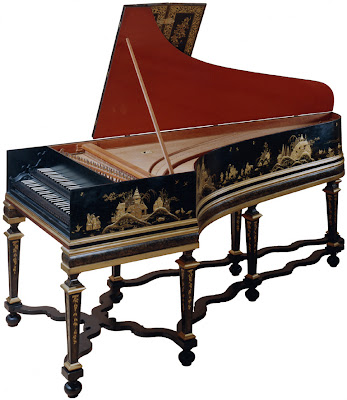
From a tiny home spring many wonders - the Lake District farmhouse of food historian Ivan Day.
Wreay Farm, a 17th-century farmhouse in Cumbria, is home to historian and foodie Ivan Day. From this small plot of land in the far north of England, he has developed a rather unique raison d’être. For more than forty years he has been a leading authority on the subject of English food history, and, for the last several years, has been organizing intimate, two-day cooking courses on period foods in his own kitchen, below.

For £260, plus a stay at a nearby bed and breakfast, enthusiasts can learn to roast meat on a 17th-century spit, make gum-paste baskets using 18th-century moulds, or learn to prepare flaumpens, chastletes and chewets, whatever those might be. Day's working museum isn't open to the public, so enrollment in a course is the only opportunity to see his collection of several centuries-worth of cookbooks and kitchen necessities, like sculpting tools and moulds.



What Day has also become widely known for, perhaps best known for, are the historic table settings he has created for numerous museums and country houses in England and America. How does period food suite a design blog? Quite logically, when one considers the elaborate designs, specialised tools and overwhelming creativity and artistic skill that were required to produce the lavish feasts created for the aristocracy.

At Hutton-in-the-Forest, the Cumbrian home of Lord and Lady Inglewood, the proud chef stands behind an 1880s ball supper dessert buffet made for last year's six-part television series Hungry for the Past.
Period illustrations, like those below, well express the sheer fantasy of the decorative confections that were displayed on tables to delight and enchant dinner guests.

An 1820s design for a pastillage pièce montée, from the collection of Prati, a Paris confectioner. The design is essentially a sugar paste mobile - the lanterns, birds and ballettes would have all moved as the guests touched the table.

A circa 1825 watercolor design for a pastillage pièce montée in the form of a putto driving a chariot drawn by a hunting poodle.


Earlier this year, day recreated an 1890s dessert table at Queen Victoria's Osborne House, above. Minton dessert stands, possibly chosen by the Queen while at the 1851 Great Exhibition, flank an epergne filled with confectionery and sweets like darioles of nougat filled with Chantilly cream, moulded Queen Cakes and miniature bavaroises.

For the event, Day recreated a meringue timbale in the form of a beehive, based on a design by Jules Gouffé's, Queen Victoria's chief pastry cook. This type of table ornament provided a sense of whimsy but also doubled up as a cover for an ice cream or other sweet entremet. The bees are made from a pistachio nuts, currents and almonds.

Below, Gouffé's original illustration of the croquembouche from his Royal Confectionery and Pastry Book translated in 1874 from the French by his brother Alphonse.



In 1998, Day and porcelain specialist Selma Schwartz recreated a French aristocratic dessert course in dining room at Waddesdon Manor, above. The image below shows a small bouquet of Day's sugar flowers, surrounded by equally-fragile Sèvres biscuit figures.

Few confectionery texts give detailed directions for making the delicate decorations, but baskets were meant to resemble contemporary Vincennes or Sèvres examples and great attention was paid to making the blossoms as realistic as possible. Stamens were often made of strands of saffron and tiny feathers and anemones, used in this bouquet, were often made with dried strawberries, stained with indigo.

An 18th-century illustration from Diderot's Encyclopédie shows a young girl making artificial flowers from pastillage.

An ornament maker's stand, used for drying pastillage flowers, from G.A. Jarrin's The Italian Confectioner, 1820.


In 1997, Day participated in the exhibition, The Pleasures of the Table, at Fairfax House, above, where he recreated of a Rococo desert course. The centerpiece of the table was a large sugar plateau designed by Day and sculptor Tony Barton. Many descriptions of English dessert plateaus exist, but few provide detailed illustrations, so Day consulted a French publication, Menon's La science de maître d’hôtel confiseur (Paris, 1749), for a model. He chose the palace of Circe, the sorceress from Homer's Odyssey, as well as Menon's sugar parterre designs. The parterres are made with chenille-wrapped-paper and filled with dyed sugar: cochineal for pink, spinach for green and gum gamboge for yellow.




Day's other specialty? Faux food! The group of replica Victorian pies, below, was made for display in the kitchens of Harewood House.

In order to create the fake pies, Day starts with real pies. He bakes the raised pie pastry using original moulds, then, working with sculptor Tony Brown, casts replicas in resin. The highly convincing finished products last an incredibly long time and, to the delight of docents, they're even child-proof.

www.historicfood.com
















































.jpg)
